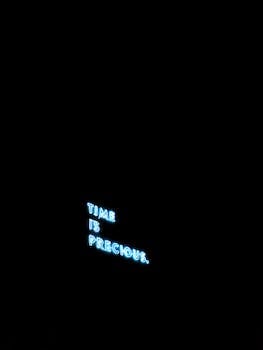

-
Table of Contents
"Unlocking Connections, Empowering Communication: Harnessing the Power of Eye Contact"
Introduction
Eye contact is a powerful nonverbal communication tool that can greatly impact our interactions with others. It is a fundamental aspect of human connection and can convey a wide range of emotions, intentions, and messages. Harnessing the power of eye contact can enhance our ability to establish rapport, build trust, and effectively communicate with others. In this article, we will explore the significance of eye contact and how to utilize it to our advantage in various social and professional settings.
The Importance of Eye Contact in Effective Communication
Eye contact is a powerful tool that can greatly enhance effective communication. It is a nonverbal form of communication that can convey a wide range of emotions and intentions. When used correctly, eye contact can establish trust, build rapport, and convey confidence. In this article, we will explore the importance of eye contact in effective communication and how to harness its power.
First and foremost, eye contact is crucial in establishing trust and building rapport with others. When we make eye contact with someone, it shows that we are paying attention to them and that we value what they have to say. This can create a sense of connection and make the other person feel heard and understood. Without eye contact, communication can feel distant and impersonal, making it difficult to establish a meaningful connection.
Furthermore, eye contact can convey confidence and assertiveness. When we maintain eye contact with others, it shows that we are confident in ourselves and what we are saying. This can make our words carry more weight and influence the perception of others. On the other hand, avoiding eye contact can make us appear unsure or untrustworthy, undermining the effectiveness of our communication.
In addition to establishing trust and conveying confidence, eye contact also plays a crucial role in nonverbal communication. Our eyes can express a wide range of emotions, from happiness and excitement to sadness and anger. By making eye contact, we allow others to see and interpret these emotions, adding depth and nuance to our communication. Without eye contact, our words may lack the emotional impact that can be conveyed through our eyes.
However, it is important to note that the appropriate use of eye contact may vary across cultures. In some cultures, prolonged eye contact may be seen as a sign of disrespect or aggression, while in others it may be expected and considered a sign of attentiveness. Therefore, it is essential to be mindful of cultural differences and adapt our use of eye contact accordingly when communicating with individuals from different backgrounds.
So, how can we harness the power of eye contact in our everyday communication? Firstly, it is important to maintain natural and comfortable eye contact. Staring intensely or avoiding eye contact altogether can make the other person feel uncomfortable and hinder effective communication. Instead, aim for a balance between maintaining eye contact and looking away occasionally to avoid appearing too intense or confrontational.
Secondly, it is crucial to be present and attentive when making eye contact. This means actively listening to the other person and responding appropriately. Avoid distractions and give the other person your full attention. This will not only enhance the effectiveness of your communication but also show respect and consideration for the other person.
In conclusion, eye contact is a powerful tool that can greatly enhance effective communication. It establishes trust, builds rapport, conveys confidence, and adds depth to nonverbal communication. By harnessing the power of eye contact, we can improve our communication skills and create meaningful connections with others. So, the next time you engage in a conversation, remember to make eye contact and let your eyes do the talking.
How to Develop Strong Eye Contact Skills for Better Connections

Eye contact is a powerful tool that can greatly enhance our ability to connect with others. Whether in a professional setting or in our personal lives, developing strong eye contact skills can make a significant difference in how we are perceived and understood by others. In this article, we will explore some effective strategies for harnessing the power of eye contact to build better connections.
First and foremost, it is important to understand the significance of eye contact. When we maintain eye contact with someone, we are signaling our attentiveness and interest in what they are saying. It shows that we are fully present in the conversation and that we value the person's thoughts and opinions. By making eye contact, we are establishing a connection and creating a sense of trust and rapport.
To develop strong eye contact skills, it is essential to practice active listening. When engaged in a conversation, make a conscious effort to maintain eye contact with the speaker. Avoid distractions and focus your attention solely on the person in front of you. By doing so, you are not only demonstrating your interest, but you are also better able to understand and respond to what is being said.
Another important aspect of developing strong eye contact skills is to be mindful of cultural differences. In some cultures, prolonged eye contact may be seen as disrespectful or confrontational, while in others it is considered a sign of trust and sincerity. It is crucial to be aware of these cultural nuances and adapt your eye contact accordingly. When interacting with individuals from different cultural backgrounds, take cues from their behavior and adjust your eye contact to align with their cultural norms.
Furthermore, it is essential to strike a balance when it comes to eye contact. While maintaining eye contact is crucial, it is equally important to avoid staring or making the other person uncomfortable. A good rule of thumb is to maintain eye contact for about 50-60% of the conversation, allowing for occasional breaks to avoid overwhelming the other person. This balance ensures that you are engaged and attentive without coming across as overly intense or intimidating.
In addition to maintaining eye contact, it is also important to be aware of your body language. Your posture, facial expressions, and gestures can all contribute to the effectiveness of your eye contact. Stand or sit up straight, lean slightly forward to show interest, and avoid crossing your arms or fidgeting. These nonverbal cues, combined with strong eye contact, create a powerful impression and help establish a connection with the other person.
Lastly, it is crucial to practice and refine your eye contact skills. Engage in conversations with friends, family, or colleagues and consciously focus on maintaining eye contact throughout. Pay attention to any discomfort or distractions that may arise and work on overcoming them. The more you practice, the more natural and effortless your eye contact will become.
In conclusion, harnessing the power of eye contact is a valuable skill that can greatly enhance our ability to connect with others. By actively listening, being mindful of cultural differences, striking a balance, and paying attention to body language, we can develop strong eye contact skills that foster better connections. Remember, practice makes perfect, so make a conscious effort to incorporate these strategies into your daily interactions.
Harnessing the Power of Eye Contact in Building Trust and Influence
Eye contact is a powerful tool that can be used to build trust and influence others. It is a nonverbal form of communication that can convey a wide range of emotions and intentions. When used effectively, eye contact can create a strong connection between individuals and establish a sense of trust and credibility.
One of the key benefits of eye contact is its ability to convey sincerity and authenticity. When we make eye contact with someone, it shows that we are fully present and engaged in the conversation. It demonstrates that we are actively listening and paying attention to what the other person is saying. This can help to build trust and create a positive impression.
Eye contact also plays a crucial role in establishing rapport with others. When we maintain eye contact, it signals to the other person that we are interested in them and what they have to say. It creates a sense of connection and can help to foster a deeper level of understanding and empathy. By making eye contact, we are able to establish a stronger bond with others and build more meaningful relationships.
In addition to building trust and rapport, eye contact can also be a powerful tool for influencing others. When we make eye contact with someone, it can convey confidence and assertiveness. It shows that we are confident in our abilities and beliefs, and can help to persuade others to see things from our perspective. Eye contact can also be used to establish dominance and authority in a situation, making others more likely to follow our lead.
However, it is important to note that the power of eye contact can vary across different cultures and contexts. In some cultures, prolonged eye contact may be seen as disrespectful or confrontational, while in others it may be seen as a sign of trust and respect. It is important to be aware of these cultural differences and adjust our use of eye contact accordingly.
To harness the power of eye contact, it is important to practice good eye contact skills. This includes maintaining eye contact for an appropriate amount of time, without staring or looking away too quickly. It is also important to be mindful of our body language and facial expressions when making eye contact, as these can also convey important messages.
In conclusion, eye contact is a powerful tool that can be used to build trust and influence others. It conveys sincerity, establishes rapport, and can be a powerful tool for persuasion. However, it is important to be mindful of cultural differences and to practice good eye contact skills. By harnessing the power of eye contact, we can create stronger connections with others and have a greater impact in our interactions.
Q&A
1. How can eye contact be harnessed to improve communication?
Maintaining eye contact during a conversation can enhance trust, understanding, and engagement between individuals.
2. What are the benefits of using eye contact in public speaking?
Using eye contact while speaking in public can help establish a connection with the audience, convey confidence, and hold their attention.
3. How can eye contact be utilized in building relationships?
Eye contact can foster a sense of intimacy, empathy, and connection in relationships, helping to build trust and strengthen bonds between individuals.
Conclusion
In conclusion, harnessing the power of eye contact is a valuable skill that can greatly enhance communication and connection between individuals. It allows for the conveyance of emotions, understanding, and engagement, leading to more effective and meaningful interactions. Eye contact can foster trust, establish rapport, and create a sense of presence, making it an essential tool in various personal and professional settings. By recognizing the significance of eye contact and practicing its appropriate use, individuals can improve their communication skills and build stronger connections with others.












